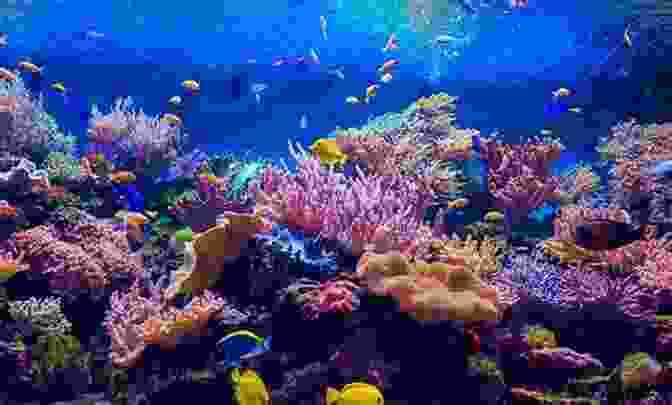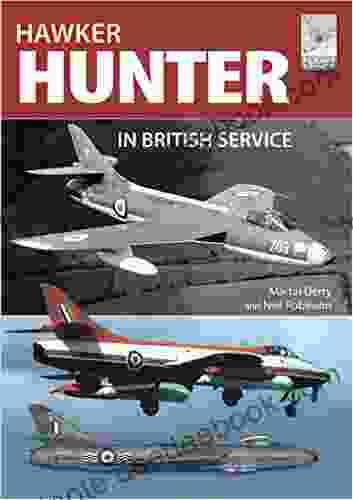The Comprehensive Guide to Underwater Photography: Capturing Breathtaking Images Beneath the Surface

4.7 out of 5
| Language | : | English |
| File size | : | 1157 KB |
| Text-to-Speech | : | Enabled |
| Screen Reader | : | Supported |
| Enhanced typesetting | : | Enabled |
| Print length | : | 90 pages |
| Lending | : | Enabled |
Dive into the Depths of Underwater Photography
The allure of the underwater world is undeniable, with its vibrant marine life, ethereal landscapes, and hidden wonders. Capturing the beauty of this hidden realm requires a unique set of skills and knowledge, which is where underwater photography comes in. This comprehensive guide will immerse you in the depths of underwater photography, providing you with the essential techniques and expert tips to master this captivating art form.

Understanding Underwater Camera Settings
Aperture, Shutter Speed, and ISO
Just like any other type of photography, understanding the interplay of aperture, shutter speed, and ISO is crucial in underwater photography. Aperture controls the depth of field, shutter speed freezes or blurs motion, and ISO adjusts the camera's sensitivity to light.
For underwater photography, a wide aperture (low f-number) is often used to create a shallow depth of field, isolating the subject from the background. A fast shutter speed is essential to freeze the movement of marine life, especially in low-light conditions. As for ISO, keep it as low as possible to minimize digital noise while ensuring proper exposure.
White Balance and Color Correction
Underwater, natural light gets filtered and absorbed by water, resulting in a gradual loss of color and contrast. To compensate for this, it's important to adjust the camera's white balance. Most underwater cameras offer preset white balance options, such as "Underwater" or "Snorkel," which can help improve color accuracy.
Additionally, post-processing software can be used to fine-tune the colors and contrast of underwater images, enhancing their vibrancy and restoring the natural beauty of the underwater world.
Essential Underwater Camera Equipment
Underwater Camera Housings
An underwater camera housing is an essential piece of equipment for protecting your camera from water damage. It provides a waterproof seal around the camera body, allowing you to take it underwater safely.
When choosing an underwater housing, consider factors such as depth rating, ease of use, and compatibility with your camera model. It's also advisable to invest in a backup housing for added peace of mind.
Underwater Lenses
The choice of underwater lenses depends on the type of photography you plan to do. Wide-angle lenses are ideal for capturing sweeping landscapes and large marine animals, while macro lenses are designed for close-up shots of small creatures and details.
For versatility, consider using a zoom lens that allows you to adjust the focal length depending on the situation. Fixed-focal-length lenses, on the other hand, often offer superior image quality and are preferred by experienced underwater photographers.
Lighting Equipment
Natural underwater light can be limited, especially at deeper depths. To compensate, underwater photographers often use artificial lighting to illuminate their subjects and enhance colors.
There are several types of underwater lighting equipment available, including strobes, video lights, and focus lights. Each type has its advantages and disadvantages, so it's important to research and choose the ones that best suit your needs.
Fundamental Underwater Photography Techniques
Composition and Framing
Composition is the arrangement of elements within a photograph to create a visually pleasing image. In underwater photography, consider using leading lines, framing techniques, and negative space to guide the viewer's eye and create depth.
Experiment with different angles and perspectives to find unique and captivating compositions that showcase the underwater world's beauty.
Focus and Exposure
Achieving sharp focus underwater can be challenging due to factors such as water movement and low light. Use the camera's autofocus system effectively and adjust the focus manually if necessary.
For exposure, use the camera's built-in light meter to determine the optimal settings. Alternatively, you can use an external light meter for more precise control over exposure, especially in challenging lighting conditions.
Motion and Movement
Underwater creatures are constantly in motion, which adds an element of dynamism to underwater photography. To capture motion effectively, use a fast shutter speed to freeze the action or a slower shutter speed to create a sense of movement and blur.
Panning the camera with a moving subject is another technique to convey a sense of speed and direction in underwater images.
Advanced Underwater Photography Tips
Capturing Macro Underwater Images
Macro underwater photography allows you to explore the intricate details and hidden worlds of small marine creatures. To achieve sharp macro images, use a dedicated macro lens or a close-up filter.
Pay attention to lighting, as macro subjects can be easily overexposed or underexposed. Use a strobe or video light to provide additional illumination and avoid camera shake by using a tripod or other stabilization device.
Shooting in Low-Light Conditions
Underwater photography in low-light conditions, such as deep dives or night dives, requires special techniques. Use a camera with good low-light performance and a high ISO setting to increase the sensor's sensitivity to light.
Employ artificial lighting to illuminate your subjects and reduce camera shake by using a tripod or image stabilization features.
Capturing Underwater Wildlife
Photographing underwater wildlife requires patience, observation skills, and an understanding of animal behavior. Approach animals slowly and respectfully, avoiding sudden movements that could scare them away.
Use a telephoto lens or zoom lens to capture distant subjects and be prepared to wait for the perfect moment to take the shot. Consider using a hide or blind to camouflage yourself and minimize your impact on the wildlife.
Post-Processing Underwater Images
Post-processing is an essential step in underwater photography to enhance the colors, contrast, and overall quality of your images. Use software such as Adobe Lightroom or Photoshop to adjust white balance, color correction, and exposure.
Crop and straighten the images to improve composition and remove unwanted elements. Additionally, consider using noise reduction tools to minimize digital noise, especially in low-light images.
Underwater photography is a captivating and rewarding art form that allows us to document and share the beauty of the underwater world. By understanding the essential techniques, mastering the equipment, and applying advanced tips, you can take your underwater photography to new depths. Remember to prioritize safety, respect the marine environment, and continue exploring the hidden wonders that lie beneath the surface.
So, what are you waiting for? Dive into the depths and unleash your inner underwater photographer! Capture breathtaking images that will forever preserve the beauty and magic of the underwater world.
4.7 out of 5
| Language | : | English |
| File size | : | 1157 KB |
| Text-to-Speech | : | Enabled |
| Screen Reader | : | Supported |
| Enhanced typesetting | : | Enabled |
| Print length | : | 90 pages |
| Lending | : | Enabled |
Do you want to contribute by writing guest posts on this blog?
Please contact us and send us a resume of previous articles that you have written.
 Novel
Novel Page
Page Chapter
Chapter Reader
Reader Library
Library Paperback
Paperback E-book
E-book Newspaper
Newspaper Bookmark
Bookmark Glossary
Glossary Foreword
Foreword Synopsis
Synopsis Footnote
Footnote Manuscript
Manuscript Scroll
Scroll Codex
Codex Library card
Library card Narrative
Narrative Reference
Reference Encyclopedia
Encyclopedia Dictionary
Dictionary Thesaurus
Thesaurus Narrator
Narrator Librarian
Librarian Catalog
Catalog Borrowing
Borrowing Study
Study Scholarly
Scholarly Lending
Lending Reserve
Reserve Journals
Journals Reading Room
Reading Room Rare Books
Rare Books Special Collections
Special Collections Interlibrary
Interlibrary Study Group
Study Group Thesis
Thesis Dissertation
Dissertation Storytelling
Storytelling Reading List
Reading List Martha Buelt
Martha Buelt Pen Black
Pen Black Carmen Tafolla
Carmen Tafolla Mark R Levin
Mark R Levin Michael A Bailey
Michael A Bailey Carolyn Keene
Carolyn Keene Tiffany Reisz
Tiffany Reisz Maurice Hinson
Maurice Hinson Karina Schaapman
Karina Schaapman Anton Eitzinger
Anton Eitzinger Muneer Al Busaidi
Muneer Al Busaidi Bernadette Mcdonald
Bernadette Mcdonald Stephanie Laurens
Stephanie Laurens Mick Bogerman
Mick Bogerman Amy Lant Wenger
Amy Lant Wenger Doug Most
Doug Most Maurice Cocker
Maurice Cocker Jean Philippe Marre
Jean Philippe Marre Axn Sadokpam
Axn Sadokpam Elizabeth Partridge
Elizabeth Partridge
Light bulbAdvertise smarter! Our strategic ad space ensures maximum exposure. Reserve your spot today!

 Julio CortázarThe Theatres of Molière: A Historical and Architectural Exploration of the...
Julio CortázarThe Theatres of Molière: A Historical and Architectural Exploration of the...
 Elias MitchellImmerse Yourself in Literary Excellence: Play Today Volume 60 Unleashes a...
Elias MitchellImmerse Yourself in Literary Excellence: Play Today Volume 60 Unleashes a... William FaulknerFollow ·2.4k
William FaulknerFollow ·2.4k Samuel Taylor ColeridgeFollow ·11.8k
Samuel Taylor ColeridgeFollow ·11.8k Fyodor DostoevskyFollow ·13.7k
Fyodor DostoevskyFollow ·13.7k Miguel NelsonFollow ·2.5k
Miguel NelsonFollow ·2.5k Steven HayesFollow ·8.5k
Steven HayesFollow ·8.5k Edgar CoxFollow ·16.8k
Edgar CoxFollow ·16.8k Kevin TurnerFollow ·6.1k
Kevin TurnerFollow ·6.1k Jan MitchellFollow ·7.7k
Jan MitchellFollow ·7.7k

 Allen Ginsberg
Allen GinsbergUnveiling the True Meaning of Enough: A Comprehensive...
: In the relentless pursuit of progress and...

 Clay Powell
Clay PowellHawker Hunter: The Jet Fighter that Shaped British...
Nestled in the halls of aviation...

 Alec Hayes
Alec HayesWhen and How to Use Lean Tools and Climb the Four Steps...
Lean is a management...

 Trevor Bell
Trevor BellVolume of Charlotte Mason Original Homeschooling: A...
Charlotte Mason's original...

 John Parker
John ParkerAscending Tristan da Cunha: A Comprehensive Guide to...
Prepare yourself for an extraordinary journey...
4.7 out of 5
| Language | : | English |
| File size | : | 1157 KB |
| Text-to-Speech | : | Enabled |
| Screen Reader | : | Supported |
| Enhanced typesetting | : | Enabled |
| Print length | : | 90 pages |
| Lending | : | Enabled |










